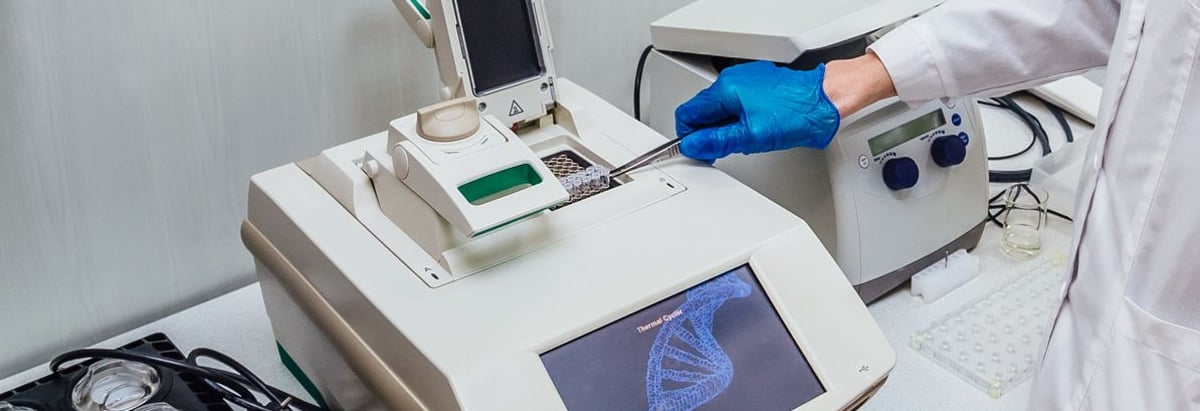- United States
- /
- Life Sciences
- /
- NasdaqGS:TECH
A Rising Share Price Has Us Looking Closely At Bio-Techne Corporation's (NASDAQ:TECH) P/E Ratio

It's great to see Bio-Techne (NASDAQ:TECH) shareholders have their patience rewarded with a 32% share price pop in the last month. And the full year gain of 35% isn't too shabby, either!
Assuming no other changes, a sharply higher share price makes a stock less attractive to potential buyers. In the long term, share prices tend to follow earnings per share, but in the short term prices bounce around in response to short term factors (which are not always obvious). So some would prefer to hold off buying when there is a lot of optimism towards a stock. Perhaps the simplest way to get a read on investors' expectations of a business is to look at its Price to Earnings Ratio (PE Ratio). A high P/E implies that investors have high expectations of what a company can achieve compared to a company with a low P/E ratio.
See our latest analysis for Bio-Techne
Does Bio-Techne Have A Relatively High Or Low P/E For Its Industry?
We can tell from its P/E ratio of 54.35 that there is some investor optimism about Bio-Techne. As you can see below, Bio-Techne has a higher P/E than the average company (35.3) in the life sciences industry.

Bio-Techne's P/E tells us that market participants think the company will perform better than its industry peers, going forward. Shareholders are clearly optimistic, but the future is always uncertain. So further research is always essential. I often monitor director buying and selling.
How Growth Rates Impact P/E Ratios
Generally speaking the rate of earnings growth has a profound impact on a company's P/E multiple. Earnings growth means that in the future the 'E' will be higher. Therefore, even if you pay a high multiple of earnings now, that multiple will become lower in the future. Then, a lower P/E should attract more buyers, pushing the share price up.
Bio-Techne's 53% EPS improvement over the last year was like bamboo growth after rain; rapid and impressive. Even better, EPS is up 35% per year over three years. So you might say it really deserves to have an above-average P/E ratio.
A Limitation: P/E Ratios Ignore Debt and Cash In The Bank
It's important to note that the P/E ratio considers the market capitalization, not the enterprise value. In other words, it does not consider any debt or cash that the company may have on the balance sheet. Theoretically, a business can improve its earnings (and produce a lower P/E in the future) by investing in growth. That means taking on debt (or spending its cash).
Such spending might be good or bad, overall, but the key point here is that you need to look at debt to understand the P/E ratio in context.
So What Does Bio-Techne's Balance Sheet Tell Us?
Bio-Techne's net debt is 1.7% of its market cap. It would probably trade on a higher P/E ratio if it had a lot of cash, but I doubt it is having a big impact.
The Bottom Line On Bio-Techne's P/E Ratio
With a P/E ratio of 54.3, Bio-Techne is expected to grow earnings very strongly in the years to come. Its debt levels do not imperil its balance sheet and its EPS growth is very healthy indeed. So on this analysis a high P/E ratio seems reasonable. What is very clear is that the market has become significantly more optimistic about Bio-Techne over the last month, with the P/E ratio rising from 41.2 back then to 54.3 today. If you like to buy stocks that have recently impressed the market, then this one might be a candidate; but if you prefer to invest when there is 'blood in the streets', then you may feel the opportunity has passed.
Investors have an opportunity when market expectations about a stock are wrong. If the reality for a company is better than it expects, you can make money by buying and holding for the long term. So this free visual report on analyst forecasts could hold the key to an excellent investment decision.
Of course, you might find a fantastic investment by looking at a few good candidates. So take a peek at this free list of companies with modest (or no) debt, trading on a P/E below 20.
Love or hate this article? Concerned about the content? Get in touch with us directly. Alternatively, email editorial-team@simplywallst.com.
This article by Simply Wall St is general in nature. It does not constitute a recommendation to buy or sell any stock, and does not take account of your objectives, or your financial situation. We aim to bring you long-term focused analysis driven by fundamental data. Note that our analysis may not factor in the latest price-sensitive company announcements or qualitative material. Simply Wall St has no position in any stocks mentioned. Thank you for reading.
About NasdaqGS:TECH
Bio-Techne
Develops, manufactures, and sells life science reagents, instruments, and services for the research, diagnostics, and bioprocessing markets worldwide.
Flawless balance sheet with moderate growth potential.
Similar Companies
Market Insights
Community Narratives


